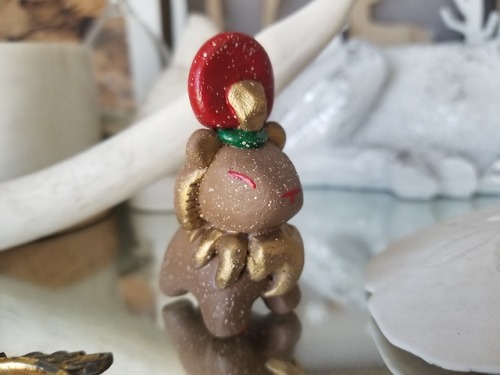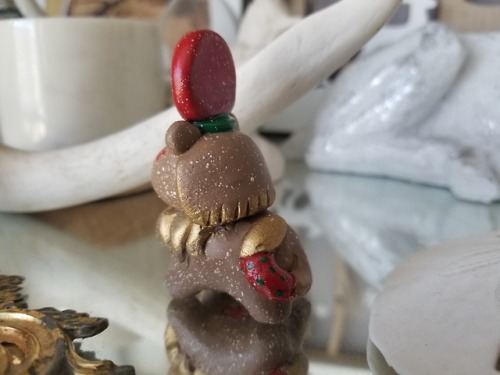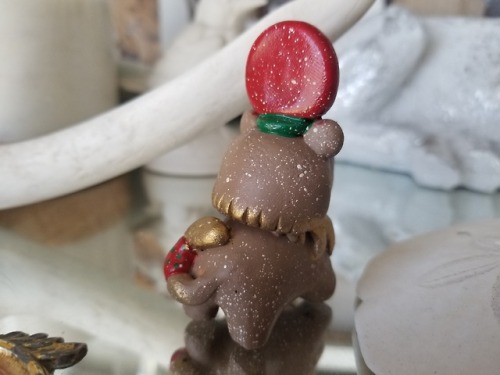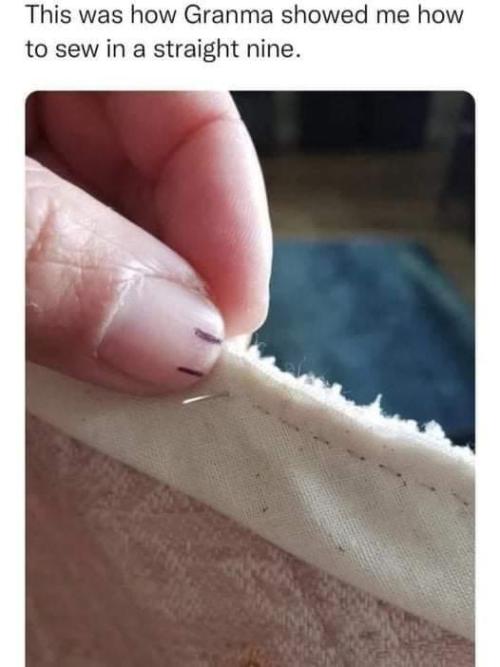Books Upon Books Upon Books




books upon books upon books
More Posts from Kansas-sun-witch and Others


Uk peeps!! Let’s get this going! 🏳️⚧️🇬🇧
ANUBIS



WHO IS HE?
Anubis, also known as Inpu and Anpu in Ancient Egyptian mythology, is the god of funerary rites, protector of graves, and guide to the Underworld, in Ancient Egyptian mythology, usually depicted as a canine or a man with a canine head.
BASIC INFO:
Appearance: in Egyptian mythology, Anubis is typically depicted as a jackal-headed deity or a man with the head of a jackal. He is often depicted wearing a loincloth and holding a flail or a pair of scales. The jackal head represents Anubis' role as the guide to the Underworld, while the flail and scales represent his role as the judge of the dead. Some later representations of Anubis also show him holding a scepter, which is a staff symbolizing power and authority.
Personality: he is often portrayed as a serious and mysterious figure. He is known as the guide and guardian of the Underworld, and he is responsible for helping the dead on their journey to the afterlife. Anubis is also depicted as just and fair, using his scales to weigh the heart of the deceased against the Feather of Ma’at to determine their worthiness for the afterlife. Despite his association with death and the Underworld, Anubis is also seen as a protector and guide for the living, and he is believed to help those who call upon him for protection and guidance.
Symbols: flail, crook, sceptre, and mummy gauze
God of: the dead, mummification, embalming, the afterlife, and tombs
Culture: Egyptian
Plants and trees: star anise, benzoin, cloves, cardamom, frankincense, myrrh, rosemary, cypress, pomegranate, cedarwood, blue lotus, juniper, lilies, and black roses.
Crystals: black obsidian, onyx, jet, garnet, smoky quartz, babingtonite, augite, alabandite, agate geode, petrified palmwood, brochantite, agate, labradorite, trolleite, melanite, dendritic opal, larvikite, biotite, fire opal, merlinite, bloodstone, hematite, and black tourmaline.
Animals: jackal, dog, flies, scarab beetle, Ibis bird, and snake
Incense: cinnamon, sage, frankincense, cedarwood, pomegranate, myrrh, copal, dragons blood, and vanilla
Practices: death witchcraft, necromancy, protection, death magick, guidance (especially through transitions), shadow work, funerary rites, cremation rituals, death positive activism, funeral service provision, divination, and ancestor worship
Colours: black, gold, green, and red
Number: 13
Zodiac: Scorpio
Tarot: Death
Planets: Pluto
Days: Monday, Thoth (Thuty) Festival, Opening of the Mouth ceremony, Festival of the Divine Birth, Nile Flood Festival, Festival of the Dead, and Festival of the Jackal
Parents: Ra (his father originally), Hesat (mother), Bastet (sometimes referred to as his mother), Osiris (his father in later stories), and Isis (his mother in later stories).
Siblings: Horus, Babi, Sopdet, Wepwawet, and Bata
Partner: Anput and Nephthys
Children: Kebechet
MISC:
• Flail: the flail is associated with Anubis because it was believed to have been used by him in the process of mummification. In ancient Egyptian mythology, the flail was a tool used to separate the body of the deceased from its wrappings. It was also associated with the idea of balance and justice, as the flail had two heads that were believed to represent the balance of life and death. In some depictions, Anubis is shown holding a flail in his hands as a symbol of his role as a judge of the dead.
• Crook: it was a staff with a curved end and was used by shepherds to guide their flocks. In Egyptian mythology, the crook was associated with the god Osiris and later with Anubis as well. It was believed to represent Anubis' role as a shepherd of souls, guiding the deceased through the afterlife and protecting them from danger. Additionally, the crook was seen as a symbol of authority and power, as the pharaohs were often depicted carrying one as a sign of their divine rule.
• Sceptre: in ancient Egypt, a sceptre was a staff that was carried by the pharaohs and gods to symbolize their power and authority. For Anubis, his sceptre was known as the Pesesh-kef Sceptre, and it represented his role as a guide and protector of the dead. The Pesesh-kef was a symbol of his status as a god and was used to perform rituals and ceremonies related to the afterlife. It was also believed to have healing or magical properties and was sometimes buried with people to protect them on their journey through the afterlife.
• Jackal: Anubis is often depicted with the head of a jackal, which is one of the reasons why jackals are associated with him. Jackals were considered scavengers and were known to be present in the deserts where many Egyptian burials took place. For this reason, they were believed to have been closely associated with death and the afterlife. The jackal was also said to have the ability to navigate the underworld, which further strengthened its association with Anubis, who was considered the guide and protector of the deceased in the afterlife.
• Mummy gauze: the material used to wrap and bind the mummies of the deceased. Anubis, as the god of mummification and the afterlife, was closely associated with the practice of mummification and often depicted holding rolls of mummy gauze as a symbol of his role. In addition, mummy gauze was believed to have magical or protective properties, and some Egyptians would use it as a talisman to keep themselves or their loved ones safe from harm. As a result, mummy gauze became a potent symbol of Anubis' power and connection to the underworld.
• The colour black: often associated with death and the underworld, this is likely because of the dark, fertile soil of the Nile River banks, where many Egyptian burials took place. Anubis, as the god of death and the afterlife, was closely associated with the Underworld and the process of mummification, which required the use of black resin and tar. As a result, the color black became a powerful symbol of Anubis and his domain, and was often used in paintings, carvings, and other representations of the god.
FACTS ABOUT ANUBIS:
• He likes metal music (especially black metal), dark crystal jewelry, gothic style, and dark coloured sports cars.
• In the Egyptian Book of the Dead, it is said that Anubis weighs the heart of the deceased against the Feather of Ma’at to determine their worthiness for the afterlife.
• Anubis was regularly invoked for protection as well as vengeance.
• He helped Iris bring Osiris back from the dead.
• His time of day is dusk.
• Anubis is very caring and kind to his worshipper.
• The name “Anubis” is the Greek form of the Egyptian name “Anpu” which means to decay.
• He is not a demon or evil entity.
• Anubis was said to be the creator of embalming.
• The Greeks associated Anubis with Hermes, the Greek god who guided the dead to the afterlife. The two would be joined together to create Hermanubis, making him more accessible to non-Egyptians.
• A very sweet entity and only wishes to help guide people in the right direction.
• He knows the date of everyone’s death and may be petitioned to reveal it.
• Anubis is one of the oldest Egyptian gods.
• He is represented by the colour black.
HOW TO INVOKE ANUBIS:
Connect with Anubis as you would any other deity—with profound respect and gratitude. He selects devotees who are willing to face their shadows, and who aren’t afraid of spirts and death. Come to him with a pure heart and pure intentions.
To work with him, you can: read about him, create sacred altar space for him, leave offerings for Anubis in his sacred space, call him by his real name Anpu (to decay), research the mummification process and purpose, explore your beliefs about death, do shadow work and ritual work with him, and visiting cemeteries.
PRAYER FOR ANUBIS:
"Oh great and powerful Anubis, Lord of the Dead and guide of souls, I call upon you now in this moment. I honor and respect your wisdom and strength, and I seek your guidance and protection on my journey through this life and into the next.”
“Please bless me with your presence and wisdom as I embark on this new path. Show me the way to make the choices that will lead to a good and honorable life, and give me the courage to face the unknown with bravery and confidence.I offer this prayer to you with gratitude and reverence. Hail to you, Lord Anubis.”
SIGNS THAT ANUBIS IS CALLING YOU:
• Spiritual signs, such as meditative visions or dream visitations.
• Seeing black dogs and bones.
• A strong feeling of connection to Anubis or the Egyptian pantheon.
• Finding yourself increasingly drawn to topics related to death, the afterlife, or spirituality.
• A sense of being guided or protected in times of difficulty or distress.
• Finding objects related to death, burial, or the occult in unexpected places.
• Experiencing unusual synchronicities or coincidences related to the god.
• Having a strong desire to learn more about the Egyptian pantheon or the lore surrounding Anubis.
OFFERINGS:
• Cool water.
• Strong liquor, like rum.
• Spicy foods.
• Dark and bitter chocolate and beer.
• Practicing divination.
• Strong incense: frankincense, cedarwood, and myrrh.
• Black coffee.
• Shadow work (only if you’re emotionally prepared for it).
• Pomegranates.
• Feathers.
• Aged cheese.
• Sourdough.
• Red meat: beef (especially steak), pork, lamb, and goat.
• Bitter chocolate.
• Cypress oil.
• Bones and skulls.
• Pumpkin spice.
• Locks and keys.
• Bread.
• Crystals: black obsidian, onyx, jet, garnet, smoky quartz, labradorite, bloodstone, and hematite.
• Scales.
• Logical puzzles.
• Dog things.
• Bandages.
• Karkadeh.
DEVOTIONAL ACTS:
• Honour the dead and your ancestors
• Leaving flowers on graves.
• Support orphans and the homeless.
• Act as a guide for someone.
• Live your life as if it was your last (mindfully).
• Volunteer in cleaning cemeteries or in your local mortuary.
• Dress in neutral and dark colours.
• Collect animal bones. Clean then and breathe life into them (do so ethically, killing animals for bones is a blatant disrespect for Anubis, the animal, and the law).
• Adopt unwanted animals (the ones who are critically ill or are of old age) and give them the best life before they pass.
• Wearing black clothing in his honour.
• Volunteer or donate to local dog shelters.
• Research him.
• Get involved with spirit work.
• Practice divination; in the Papyri, Anubis is noted to be an intermediary for divination.
• Get into herbology: his priests were skilled herbal healers and dealt with many herbs during the mummification process.
• Draw, paint, or sculpt something in his honour.
Hello! Allow me to reintroduce myself!
I have managed to acquire some more traction on here, so I figured i would share a few things.
My name is Shelby
I'm a Gemini Sun, Scorpio Moon, Libra Rising
Like my intro header says my main Patron is Ra, but I do also communicate with Anubis
I'm currently a Sun witch with weather hobbies, but to quote video game character, "My muse is a fickle bitch with a short attention span!" -Sander Cohen, BioShock. I was heavily a divination witch, then I shifted to death witch, took a hiatus because of life, started off again with an interest in weather magic.
I'm also clairaudient, or at least have the tendency to be.
I still like divination, mostly Tarot, Oracle, and Pendulum.
Welcome to my blog, my asks and DMs are open. Come say hello!
How to reference in your grimoire
If you intend on sharing your grimoire with the public or you're a fan of a more academic style of writing then you're gonna want to reference your sources to avoid any kind of plagiarism.
You may have already learned how to reference at your college/uni, in which case follow that method, but if you haven't let me show you what i've been doing in my grimoire.
The referencing style I was taught in my degree is a form of APA 7th edition. This style is best for essays and small research papers and since my grimoire is essentially a bunch of mini contextual essays stuck together I thought it was appropriate.
Here's the format:
Author Surname, Author Initials. (Date of publication/release). Title of source: sub-heading/title of chapter. Publishing company/website. Place of publication/website link. [Format]
So for example, the book I'm currently reading is Buried by Professor Alice Roberts. If I were to reference this book in this format it would look something like this:
Roberts, A. (2023). Buried, An Alternative History of The First Millennium in Britain: Water and Wine. Simon and Schuster. London. [Book]
(Its up to you whether you decide to put the chapter before the book title, it doesn't make a difference, but I prefer doing it this way.)
This reference will need to follow an in-text citation. You can do that by adding a little number in parentheses next to your quote or paraphrase that corresponds to the number on your list of references OR you can make a mini reference following this method:
(Author Surname, Author Initials. (Date of publication). Page number if required)
So following this method an in-text citation would look like this:
(Roberts, A. (2023). p1)
Tips
If you are citing a source with multiple authors, organised them alphabetically by surname, your in text citation only needs to include the first one.
If you're referencing an online upload of an old source like Internet Archive or Project Gutenberg, include the original authors name first, uploaders name/ID second and mark which is which in parenthesis, then the date of original publication if you can find it, followed by the date it was uploaded to the site.
If you are referencing a film/TV episode, use the name of the director and include (Dir) next to their name.
If you can't find a date of publication/upload then write DNA instead.
Always put your references at the back of your grimoire. If your grimoire contains multiple chapters, group them by each chapter and then organise either alphabetically or chronologically. If your in-text citation uses numbers, organise your reference list chronologically. If you're using a mini reference, organise your reference list alphabetically.
This last bit is especially important for practitioners who intend to publish their work. Please please please do not skip referencing! I've read so many traditionally published witchcraft books who's authors don't do this or do it half-assed and I can't stand it.
Readers deserve to know where your information is coming from so they can be the judge on whether or not it's appropriate for them to practice themselves. Not doing so creates a cycle of ignorance among readers and new practitioners that encourages the spread of cultural appropriation, poor media literacy and poor historical and scientific understanding. Always cite your sources.
I found my beginner/baby witch blog @kansas-divination-witch. It was one of those instances where I couldn't delete my blog for one reason or another. I was full of zeal and very much unorganized. I was young and adorable.










This morning I spent some time with Ra, and I was able to switch on my clairaudient abilities. Using the Bee Tarot I used what is called Hive and Flower spread. Their version of the Celtic Cross Spread. It was an overall positive spread, and any negative stuff that was brought up I am already aware of and in the thick of things. Things will get better, I have done it before and I will do it again.
It was also brought up in the cards, I need to get back on the spiritual track as well. This was brought up by the Delphic Bee (Hierophant) and the Star. Which is true. I definitely have lost my zeal I used to have back in the day.
I'm also getting back in the habit of journaling again. It is helping me keep my mind off of too many things.

So beautifully adorable!




-Pocket Goddess Sekhmet-
Sekhmet, Sekhmet, Eye of Ra. Lady of the Red Lands. She both protector, fierce of claw, and a healer strong in heka. A large, complex name that almost has two faces to her own side of the coin. She is a Name that came to me often this year, and has brought her fierceness with her. While this piece may be a small tribute, it is no less of who she is.
She’s for sale on my etsy.
Etsy
If you want to see what pieces I’m working on, what is new and up and coming as well as get first chances at any of my work, please follow me on our Patron.
Patron
Senebty,
Iseqi
Daughter of Amun-ra and Set
Beloved of Hethert-Sekhmet and Heru-Wer
Duolingo is being weird again! I finished a little reading exercise, and on the the little stats screen I see this!


Grandmas FTW ✨
-
 the-original-anklebiter liked this · 1 month ago
the-original-anklebiter liked this · 1 month ago -
 crazyzombiething liked this · 1 month ago
crazyzombiething liked this · 1 month ago -
 pyrenaia reblogged this · 1 month ago
pyrenaia reblogged this · 1 month ago -
 loverboylane liked this · 1 month ago
loverboylane liked this · 1 month ago -
 pillango-arny liked this · 1 month ago
pillango-arny liked this · 1 month ago -
 sstuffxcc liked this · 1 month ago
sstuffxcc liked this · 1 month ago -
 r3silver liked this · 1 month ago
r3silver liked this · 1 month ago -
 smmagill liked this · 1 month ago
smmagill liked this · 1 month ago -
 m0ri-mement0 reblogged this · 1 month ago
m0ri-mement0 reblogged this · 1 month ago -
 psychiatry-and-poetry liked this · 1 month ago
psychiatry-and-poetry liked this · 1 month ago -
 yuierza97 liked this · 1 month ago
yuierza97 liked this · 1 month ago -
 dizzy-izzy23 reblogged this · 1 month ago
dizzy-izzy23 reblogged this · 1 month ago -
 rosy-coco liked this · 1 month ago
rosy-coco liked this · 1 month ago -
 irenicxselcouth reblogged this · 1 month ago
irenicxselcouth reblogged this · 1 month ago -
 irenicxselcouth liked this · 1 month ago
irenicxselcouth liked this · 1 month ago -
 lacewingassassin reblogged this · 1 month ago
lacewingassassin reblogged this · 1 month ago -
 lacewingassassin liked this · 1 month ago
lacewingassassin liked this · 1 month ago -
 monachopsiss reblogged this · 1 month ago
monachopsiss reblogged this · 1 month ago -
 monachopsiss liked this · 1 month ago
monachopsiss liked this · 1 month ago -
 glitterbowtie reblogged this · 1 month ago
glitterbowtie reblogged this · 1 month ago -
 crownbling liked this · 1 month ago
crownbling liked this · 1 month ago -
 daeduo liked this · 1 month ago
daeduo liked this · 1 month ago -
 mizcervantes reblogged this · 1 month ago
mizcervantes reblogged this · 1 month ago -
 redresolveteen liked this · 1 month ago
redresolveteen liked this · 1 month ago -
 esdube liked this · 1 month ago
esdube liked this · 1 month ago -
 etheraes reblogged this · 2 months ago
etheraes reblogged this · 2 months ago -
 thetitancurse liked this · 2 months ago
thetitancurse liked this · 2 months ago -
 onlymythoughts2see reblogged this · 2 months ago
onlymythoughts2see reblogged this · 2 months ago -
 chamomilecatharsis liked this · 2 months ago
chamomilecatharsis liked this · 2 months ago -
 anotherpassiongirl liked this · 2 months ago
anotherpassiongirl liked this · 2 months ago -
 hoellenangel reblogged this · 2 months ago
hoellenangel reblogged this · 2 months ago -
 sirinkapo reblogged this · 2 months ago
sirinkapo reblogged this · 2 months ago -
 sirinkapo liked this · 2 months ago
sirinkapo liked this · 2 months ago -
 asylumofshadows666 liked this · 2 months ago
asylumofshadows666 liked this · 2 months ago -
 kindnessglow reblogged this · 2 months ago
kindnessglow reblogged this · 2 months ago -
 pandorabox-rags reblogged this · 2 months ago
pandorabox-rags reblogged this · 2 months ago -
 superkursunaskr liked this · 2 months ago
superkursunaskr liked this · 2 months ago -
 akrepileyelkovan reblogged this · 2 months ago
akrepileyelkovan reblogged this · 2 months ago -
 selseal liked this · 2 months ago
selseal liked this · 2 months ago -
 chaptersandcocoa liked this · 2 months ago
chaptersandcocoa liked this · 2 months ago -
 dark-r0nin liked this · 2 months ago
dark-r0nin liked this · 2 months ago -
 omgitsdana liked this · 2 months ago
omgitsdana liked this · 2 months ago -
 zzunday reblogged this · 2 months ago
zzunday reblogged this · 2 months ago -
 zzunday liked this · 2 months ago
zzunday liked this · 2 months ago
